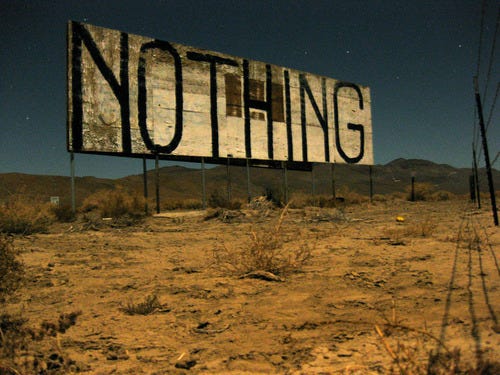From 0 to Startup: How We Made $70,000 in Revenue in Our First 6 Months – Part 1
I started a digital design school in Chicago called Designation this past summer. We’ve been bootstrapped since the beginning and have made $70,000 in revenues so far. This is how I got started.
DEC 5, 2023 UPDATE: I originally wrote this blog post on Dec 11, 2013 while I was in the middle of getting the business started. I ended up getting too busy and I never got around to writing the rest of the series. Perhaps one day, I’ll get to it but for now rest assured that there was a happy ending and we eventually sold the company to WeWork in 2018.
I’m writing this post in hopes that it’ll provide some transparent insight for others on how to get started. Recently, I’ve really become inspired by GrooveHQ’s awesome blog – it’s great how they’re sharing with everyone their mistakes, successes, and key takeaways along the way. It’s only fair for me to contribute back what little advice I can give to others – after all, most of my startup education has been from learning from other entrepreneurs’ generous insights.
I started a digital design school in Chicago this past summer. We’ve been bootstrapped since the beginning and have made $70,000 in revenues so far. It’s not much, but it’s a start. We still have a long way to go with a lot of work ahead of us, and the future is still extremely risky, but I’ve learned so much in the past 6 months that I wanted to share my journey thus far. I separated the post into different parts, and for each one I’ll explain in detail what I did and highlight some key takeaways.
PERSONAL STORY: About 9 months ago during my junior year of college, I had nothing. My failed startup, Fitsby, was zombified, and our entire team had grown distant. Summer was close and I didn’t have any opportunities lined up in life. I was back at square one with literally nothing going for myself. All these past years of reading Paul Graham essays, geeking out in startup news, and coding things here and there basically amounted to nothing. Most of my friends were already securing summer internships at Fortune 500 companies, which would probably convert to full-time jobs waiting for them upon post-graduation. Meanwhile, it was a bit late for me to go the corporate route, and I was in desperate need of anything remotely resembling a hint of future success. But, I loved startups and was determined to stick with it.
MAIN POINT: Bad situations are good. When you have your back against the wall, you can literally do anything, simply because you have no other choice.
IDEA (duration: passive thoughts from prior months): I first got the idea for The Designation upon hearing President Obama’s State of the Union Address urging Americans to increase their computer science skills. A little later, I saw Code.org heavily promoting the programming movement, supplemented by the emergence of multiple development bootcamps across the nation. I thought someone should be creating an academy that taught people how to design in the modern digital age, and I soon started to really gravitate towards this idea for an immersive digital design school. I was always inspired by companies like Path and Airbnb – startups that particularly focused on making the best user experience a person could have in a product/service. I knew that I loved working in the design field from my previous experiences/ventures, and I knew I definitely wanted to be part of a design-driven company in the future.
MAIN POINT: Keep an eye out for stuff that’s happening around you, and you’ll find that there are always opportunities. Really. There’s always something (see Noah Kagan’s $1k-in-24-hours beef jerky venture).
MAIN POINT: I don’t think passion is necessarily required to start a business, but it definitely helps more than not having it. For me, I knew I always had an intrinsic pull towards creativity and simplicity, and I found genuine contentment with the digital design process, so building a uniquely design-focused school sounded quite awesome to me.
RESEARCH (duration: loosely 1 week): I started Googling and Quoraing what ‘tech bootcamps’ existed at the time. There were some really amazing new education models like General Assembly in New York and Chicago’s own Starter League (their story is one of bootstrapping, badassery, and pure inspiration). The list I made ended up being quite long, and I found that most of these schools focused on teaching web or mobile development, with some design learning on the side. This told me there might be an opportunity here – focusing on building a purely design-focused program where we covered everything from UX, visual and branding, to coding on the front-end with HTML/CSS/JS.
MAIN POINT: Get out of the idea stage quickly and move on to action. Ideas are quite worthless just by themselves. Inertia is strong, and you should be on the side of momentum via actions.
LEAN ACTION (duration: 4 days): I’m always on the lookout for resources or tools I can utilize to help me achieve whatever I am working on. For example, I knew that go.co had a Startup America promotion ($0 for a domain), and WestHost offered free web hosting for students ($0 for the first year). I also had a free WrapBootstrap site template that a generous redditor had posted a couple years ago. As a poor college student, this was enough for me to get started on launching a simple landing page using static HTML/CSS/JS.
After a couple of days of throwing things together, I had a rough draft of a marketing landing page deployed to the Web. I was ready to gauge interest in the form of email signups. I then printed out a bunch of colored flyers, and posted them everywhere I could on campus. I also asked my brother to post as many flyers as he could at his school in Chicago. 30 emails in a couple days were proof enough to me that I should keep going. But next up would be the hardest, most stress-filled part: creating the business from the ground up.
MAIN POINT: Be as lean as you can be. Use free resources – whatever it takes to build something quickly, test it out, and not waste any further time. Simply, find out if your idea might be something people want.
I’m not trying to encourage anyone to build an improper MVP, but for us at the time, the website was polished enough to be deemed acceptable.
LOGISTICS (duration: 1 hour + ~1 month for a DBA): Okay, I was ready to keep moving forward. But, as a 21-year old college student who’d never done his taxes, all the legalities and logistics of getting this brick-and-mortar design school started to intimidate me. How would I officially incorporate, and how did accounting work? Even after having took 2 college courses on accounting, I still didn’t know how to handle the nitty gritty details. I realized that this shouldn’t be a reason for holding me back – with anything, ever. I went on Google and Quora again, and also asked some of my friends in accounting and pre-law, but my confidence didn’t increase. Yet, I moved onward, and eventually figured out that a simple DBA was what I needed, so that I could legally use “The Designation” as a business name. This eventually took about a good month and a half due to a slow government-regulated process (a delay in getting a business bank account later resulted in a couple of stress-filled weeks, since I needed the DBA to deposit checks written out to “The Designation”). And for setting up payroll – what the hell was that? I knew I’d be bringing along other designers to help instruct, but if they don’t work full-time, would it be legally simplest that they be contractors in terms of pay? And if so, what tax forms were involved here? Again, I searched the internet and got the answers. I was [and still am] a complete noob in this area, but that didn’t matter, I kept realizing.
MAIN POINT: There’s really no need to worry about setting up the business logistics from the onset since these are all secondary activities in comparison to what really matters: the business. Also, no need to initially worry about incorporation, but do assume that anything government-related will take longer than expected.
Even now, we’re not yet incorporated (but we’re working on it, comfortably). I also made sure from the beginning to document every single expense/revenue in an Excel sheet – and now we can afford to learn how to bookkeep, as well as straighten out all our accounting.
This is how I began my venture – incredibly scrappy, full of assumptions, and just trying to make something that people would want. The story and advice here in Part 1 probably isn’t anything new or even compelling, but if you’ve been down in the dumps as of late, hopefully these insights can help you find inspiration. Thanks for reading!
In my next post, I’ll dive into the actual meaty details on how I put the business together, ranging from finding fellow instructors, marketing, and all the other truly stress-related activities leading up to our first cohort. If you want to follow me, you can subscribe here to get the latest updates.
UPDATE: First time on Front-page HN! Discussion here




